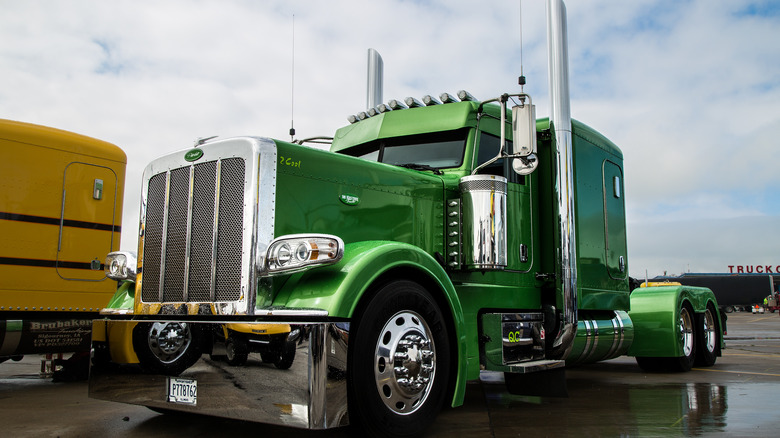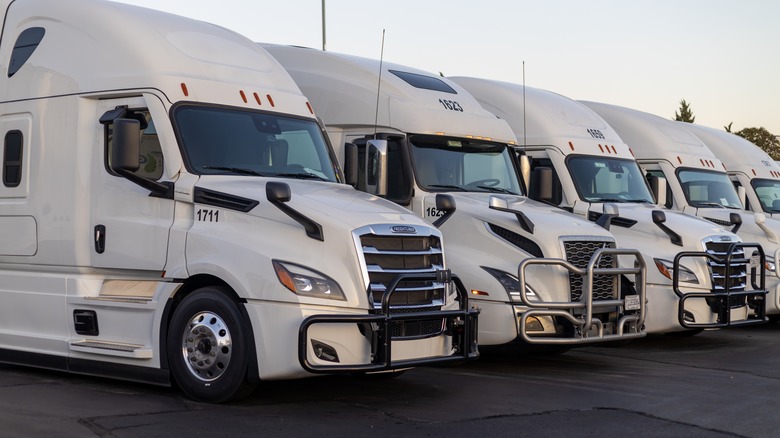
Yevgeniy Melnik/Shutterstock
By C. Gordon/
A semi-truck without a trailer attached is always a rare, interesting sight. The semi looks a bit lost and naked, in need of something to haul, so its purpose is complete. There’s actually a name for that barren semi-truck: a bobtail truck, and when it’s in the act of driving like this, it’s called bobtailing. That’s essentially the difference between a bobtail truck and a box truck: the box truck has the box, or trailer, in tow and the bobtail is flying solo.
According to J.D. Power, the uniquely named term is believed to be related to a couple of origin stories, both of which involve animal tails. In the song «Jingle Bells,» the line «Bells on bobtails ring» refers to when a horsetail is cut down so as not to become entangled in a horse-drawn sleigh, which seems like it would be a problem for both the horse and the sleigh. The other popular theory posits that it comes from the American Bobtail breed of cat, which has a short «bobbed» tail and, according to the theory, bears a slight resemblance to a semi-truck without a trailer. It’s unclear whether that’s more insulting to the cat or the truck.
Truckers are generally not a fan of bobtailing

Kirkam/Shutterstock
A box truck has a few monikers, including straight truck and cube truck, but in any case it generally means the trucker is hauling cargo along a supply chain. Bobtailing is not something truckers set out to do, and tends to occur between points at which that cargo is picked up and dropped off, like right after leaving the home terminal, and right after a cargo load is dropped off, if there wasn’t another load to pick up there. The most efficient of trips involve the least amount of bobtailing.
This is why, as J.D. Power notes, that truckers are sometimes not a fan of bobtailing, since the bobtail driving can mean that the trucker is not generating revenue at that moment and dealing with expensive fuel costs. Essentially, you want to be bobtailing as little as possible, like a taxi driver without a passenger. Beyond that, while it may seem like a truck with a fully loaded trailer can be precarious on the road to both the driver and other vehicles, driving without the trailer presents its own risks. Since the truck is primarily designed to haul a load, driving without one introduces several dangers, like the front wheels bearing most of the weight, which makes steering more difficult. This altered weight distribution also impacts the braking, since that braking power comes from the rear wheels. With no giant cargo trailer on them, hitting the brakes suddenly can lock them up and dangerously spin the truck.
So if the bobtail truck and the driver both look a bit uncomfortable on the road, it’s easier to understand why — though, you will likely pass by the shortened trucks much faster.